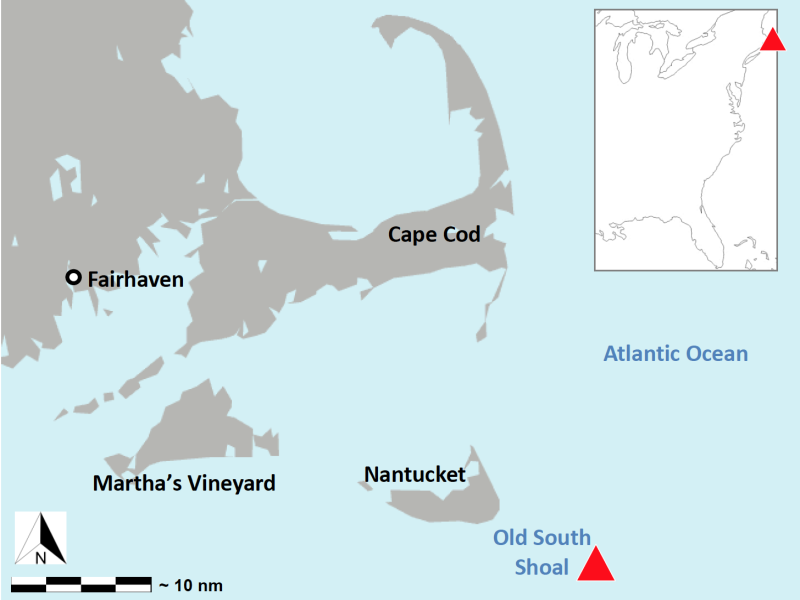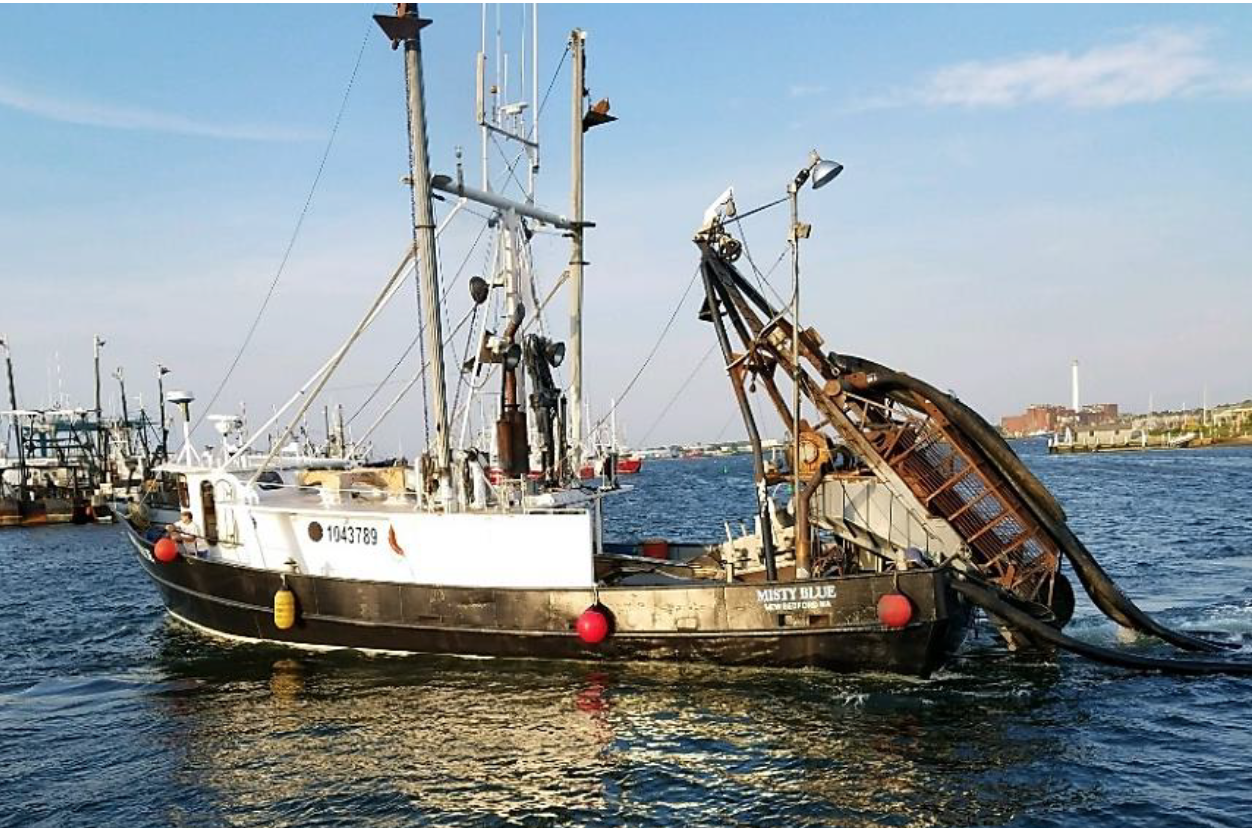The Misty Blue was working the Old South Shoal grounds, nine miles off Massachusetts’ Nantucket Island on Dec. 4, 2017. At 6:06 in the evening, the 69' x 22' clammer rolled over and sank in 75 feet of water.

The captain and the junior deckhand survived, the mate and senior deckhand didn’t. (Divers later pulled their bodies from the sunken clammer.)
The Misty Blue was built in 1996 in Chauvin, La., as a shrimper and carried the name Harvester. According to the National Transportation Safety Board’s Marine Accident Brief, over the next 21 years she underwent several modifications, starting in September 2003 when the Harvester was converted to gillnetting.
In December 2005, a little more than two years later, she was sold and changed over to a crabber. Then in May 2009, she was sold again and became a hydraulic dredger for offshore surf clams and ocean quahogs, gaining a dredge, hydraulic winch and clam-dredge gantry frame for emptying the dredge into a hopper bin. At this point she became Misty Blue.
Read the full NTSB report>>
After an inclining test and deadweight survey, a naval architect told Misty Blue’s owner that with 16 clam cages in the tanks and 10 cages on deck, she would not meet the Coast Guard’s intact stability criteria unless fuel tanks were 50 percent full while fishing, and 8,300 pounds of ballast were placed just aft of the forepeak. So the owner put 8,000 pounds of rocks below the forepeak’s floorboards and 300 pounds of concrete went on top of the water tank’s access hatch at the bow.
In May 2013 Atlantic Cape Fisheries purchased the boat. Three years later, the company added an articulating boom crane that weighed about 2,370 pounds. It was mounted above the accommodations space and was offset to the port side. Additional equipment changes were made in the spring of 2017. (There are no records indicating a naval architect was consulted after August 2009 for the subsequent modifications.)
That’s how she stood on that day in December 2017. The Misty Blue, with stabilizers out to dampen its rolling motion, deployed the clam dredge about 10 a.m. and began dredging for clams. Then at 5:52 p.m. with 14 cages of clams aboard — seven in portside tanks, seven in starboard tanks — the captain noticed a slight port list. Going aft, he and the junior deckhand removed plywood covers from the clam tanks and saw the port tank was flooded. (From here things rapidly got worse.)
The captain then picked the port stabilizer out of the water and made a full-speed turn to port to correct the list. A below-deck check showed no signs of flooding but the pumping system failed when he attempted to transfer water out of the port tank into the starboard clam tank.
Seven minutes later, at 5:59, the portside scuppers were submerged, waves were breaking over the port gunwale, and the port list was increasing. A call for help went out to the Enterprise, a nearby fishing vessel owned by Atlantic Cape Fisheries. With the aft deck submerged, the captain and crew gathered in the galley to don survival suits.
The captain, looking out a window and seeing the port gunwale suddenly completely underwater, shouted, “Get out! Get out!” He and the junior deckhand reached the starboard deck when the Misty Blue rolled hard to port and capsized at 6:06. She sank immediately, taking the two crewmen still in the galley with her.
The captain and junior deckhand boarded the Misty Blue’s life raft after it automatically deployed, and were rescued by the Enterprise. The Coast Guard suspended search and rescue operations at 8 p.m. on December 5.
The Coast Guard Marine Safety Center’s post-sinking stability analysis concluded that at the time of the accident the Misty Blue ”would have likely satisfied” the intact stability criteria. Then why did the Misty Blue capsize and sink?
The NTSB’s report concludes that the “reported flooding of the portside clam tank would have been the initiating event that ultimately sank the vessel.” That led to decreased freeboard and a list, allowing boarding seas to be trapped on deck, where “even small amounts of water on deck would significantly reduce stability of the vessel.” Small freeing ports increased on-deck water accumulation and contributed to the sinking.
The origin of the flooding was never determined but potential sources included clam tank fill and drain lines or a hull breach. In addition, underwater examination of the wreckage showed “at least three watertight bulkhead cable penetrations below deck were not properly sealed or made watertight.” Those and other potential non-watertight cable penetrations “may have led to progressive flooding between spaces, thereby decreasing reserve buoyancy and stability.”
Not being able to point to a single definitive cause for the flooding is frustrating. But if there’s a lesson here, it’s that vigilant maintenance practices give you the best chance of avoiding the outcome that was experienced by the Misty Blue and her crew.







